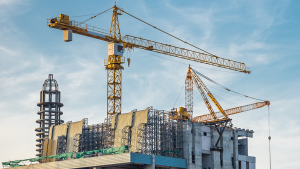Sixteen tonnes of recycled structural steel from the old Terrace Gallery of the Royal Ontario Museum went into the construction of the new University of Toronto Student Centre at its Scarborough Campus.
Ontario Region Steel Design Awards
Sixteen tonnes of structural steel reborn at Toronto university
TORONTO
Sixteen tonnes of recycled structural steel from the old Terrace Gallery of the Royal Ontario Museum went into the construction of the new University of Toronto Student Centre at its Scarborough Campus.
The building, which received honourable mention in the Ontario Region Steel Design Awards in 2005, is a good example of how second-hand steel can be used in new construction.
The Student Centre is one of a number of case studies on a website organized by a team from Natural Resources Canada, the Canadian Institute of Steel Construction and Ryerson University. The group’s objective is to identify ways of increasing the amount of reused steel components in construction from the present 10 per cent to about 20 per cent over the next five to 10 years.
Mark Gorgolewski, a member of the project team and an associate professor at the Department of Architectural Science, Ryerson University, says currently 90 per cent of the steel in demolished structures is melted down at steel mills. Diverting another 10 per cent into the reuse market would significantly reduce carbon dioxide emissions resulting from the meltdown process.
The team’s message, primarily aimed at architects and engineers, is to encourage thinking about ways of reusing steel. It also wants to make its point with building code departments, builders, steel industry suppliers and manufacturers.
Much of today’s reused steel goes into shoring operations. Steel in pre-engineered industrial buildings is also often reused for new industrial buildings, says Gorgolewski.
One of the key drawbacks to using recycled steel is sourcing it. To up the stockpile, proponents must make a convincing case to the demolition industry for careful takedowns.
“The problem is that demolition companies are often on a very short timeline, so they don’t have time to carefully remove steel,” he notes. “They have to see an economic opportunity at hand to make it worth their while.”
While some architects and engineers have expressed concern about the structural quality of recycled steel, obtaining information from historical codes is relatively easy if the age and dimensions of the steel are known, says Gorgolewski, noting information on historical codes is available on the website www.reuse-steel.org..
The website features eight case studies of projects that have reused steel.
Testing the structural integrity of recycled steel is also easy and inexpensive, he points out. The perception that “second-hand steel” is a lesser quality than new steel is gradually changing as the benefits of reuse and recycling gain wider acceptance.
“We are finding that a number of clients are asking their architects and engineers to look into opportunities for reusing steel components in their new buildings.”
While the group isn’t aware of any similar initiatives in other countries, Gorgolewski says anecdotal evidence indicates that 30-50 years ago, second-hand steel was more commonly used in new construction. One of the reasons might have been that health and safety laws were less stringent during demolition and transportation costs were lower.










Recent Comments
comments for this post are closed